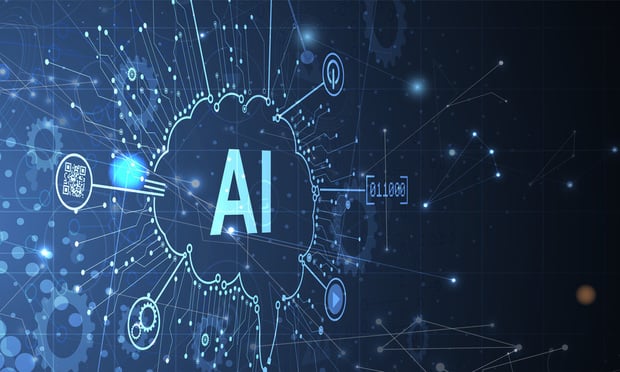Features

Generative AI and the 2024 Elections: Risks, Realities, and Lessons for Businesses
GenAI's ability to produce highly sophisticated and convincing content at a fraction of the previous cost has raised fears that it could amplify misinformation. The dissemination of fake audio, images and text could reshape how voters perceive candidates and parties. Businesses, too, face challenges in managing their reputations and navigating this new terrain of manipulated content.
Features

3 AI Bills in Congress for Employers to Track: Proposed Laws Target Automated Systems, Workplace Surveillance, and More
While much of the existing legal landscape on AI centers on broad, overarching principles, Congress has been considering bills that hone in on more specific issues like the workplace.
Features

How AI Is Changing Search
In this article, we'll find out how search is changing because of advanced AI systems, the complex algorithms that power them, the key SEO practices that still matter, and what these changes mean for B2B content marketing.
Features

The Impact of Automation on Critical Workflows for Legal Teams In E-Discovery
Automation is transforming industries across the board, and the legal sector is no exception. In the realm of e-discovery, automation is revolutionizing how legal teams manage their workflows. This article explores how automation impacts critical workflows for legal teams in e-discovery and provides valuable use cases and actionable tips to ensure that your e-discovery processes are positively impacted by automation.
Features

Harnessing AI for Efficiency and Growth
While AI presents valuable opportunities, the excitement around it can sometimes overshadow the need for proper data management and interpretation. Here's a balanced look at how AI can be used to drive efficiency and growth within your firm, along with some key considerations.
Features

Legislative Protections Against AI Voice Scams
A wide range of tools have been developed to perform vocal cloning, leading to vocal deepfakes becoming a common source of scams and misinformation. And these issues have only been exacerbated by a lack of appropriate laws and regulations to rein in the use of AI and protect an individual's right to their voice.
Features

Is SEO Dead? How AI Is Changing Search
How search is changing because of advanced AI systems, the complex algorithms that power them, the key SEO practices that still matter, and what these changes mean for B2B content marketing.
Features

Harnessing AI for Efficiency and Growth: A Balanced Approach
While AI presents valuable opportunities, the excitement around it can sometimes overshadow the need for proper data management and interpretation. Here's a balanced look at how AI can be used to drive efficiency and growth within your firm, along with some key considerations.
Features

Landscape for Legislative Protections Against AI Uses of Voice
The adoption of the DMCA-style notice-and-takedown system is promising. But vocal artists will likely need greater protections on the improper or unauthorized use of their voice, and stronger regulations requiring the disclosure of any use of AI in advertising, promotions or other digital or audio content placed on the Internet.
Features

Navigating the Legal AI Landscape In 2025
This article explores key insights from the past year, focusing on technological breakthroughs, market growth, regulatory developments, and adoption trends positioning generative AI for broader integration across the legal sector.
Need Help?
- Prefer an IP authenticated environment? Request a transition or call 800-756-8993.
- Need other assistance? email Customer Service or call 1-877-256-2472.
MOST POPULAR STORIES
- The 'Sophisticated Insured' DefenseA majority of courts consider the <i>contra proferentem</i> doctrine to be a pillar of insurance law. The doctrine requires ambiguous terms in an insurance policy to be construed against the insurer and in favor of coverage for the insured. A prominent rationale behind the doctrine is that insurance policies are usually standard-form contracts drafted entirely by insurers.Read More ›
- A Lawyer's System for Active ReadingActive reading comprises many daily tasks lawyers engage in, including highlighting, annotating, note taking, comparing and searching texts. It demands more than flipping or turning pages.Read More ›
- The Brave New World of Cybersecurity Due Diligence in Mergers and Acquisitions: Pitfalls and OpportunitiesLike poorly-behaved school children, new technologies and intellectual property (IP) are increasingly disrupting the M&A establishment. Cybersecurity has become the latest disruptive newcomer to the M&A party.Read More ›
- Abandoned and Unused Cables: A Hidden Liability Under the 2002 National Electric CodeIn an effort to minimize the release of toxic gasses from cables in the event of fire, the 2002 version of the National Electric Code ("NEC"), promulgated by the National Fire Protection Association, sets forth new guidelines requiring that abandoned cables must be removed from buildings unless they are located in metal raceways or tagged "For Future Use." While the NEC is not, in itself, binding law, most jurisdictions in the United States adopt the NEC by reference in their state or local building and fire codes. Thus, noncompliance with the recent NEC guidelines will likely mean that a building is in violation of a building or fire code. If so, the building owner may also be in breach of agreements with tenants and lenders and may be jeopardizing its fire insurance coverage. Even in jurisdictions where the 2002 NEC has not been adopted, it may be argued that the guidelines represent the standard of reasonable care and could result in tort liability for the landlord if toxic gasses from abandoned cables are emitted in a fire. With these potential liabilities in mind, this article discusses: 1) how to address the abandoned wires and cables currently located within the risers, ceilings and other areas of properties, and 2) additional considerations in the placement and removal of telecommunications cables going forward.Read More ›
- Guidance on Distributions As 'Disbursements' and U.S. Trustee FeesIn a recent case from the Bankruptcy Court for the District of Delaware, In re Paragon Offshore PLC, the bankruptcy court provided guidance on whether a post-plan effective date litigation trust's distributions constituted disbursements subject to the U.S. Trustee fee "tax."Read More ›
